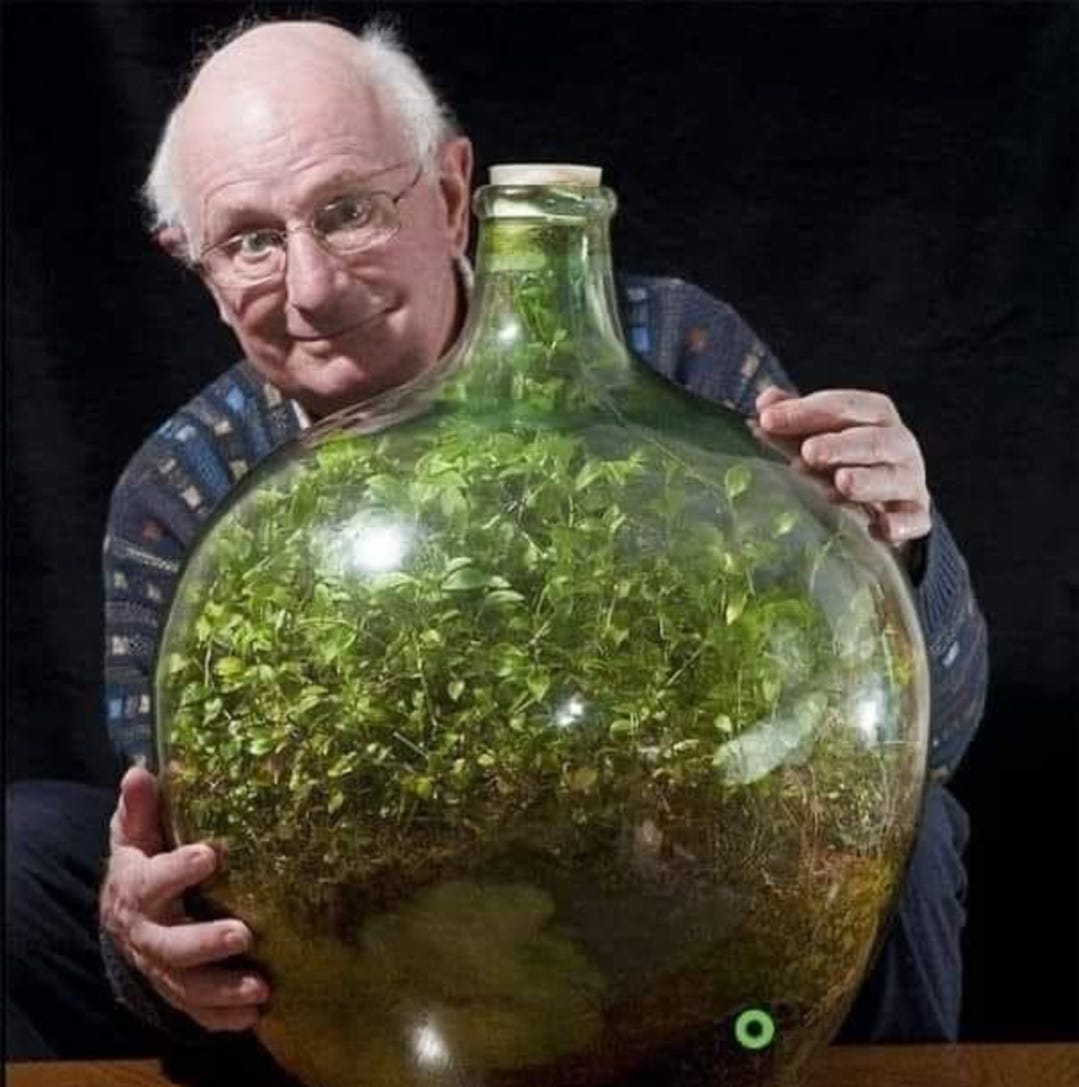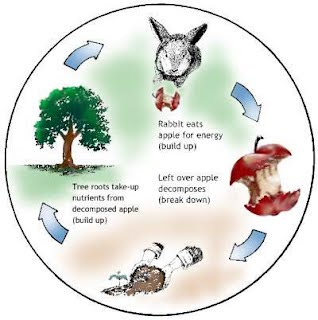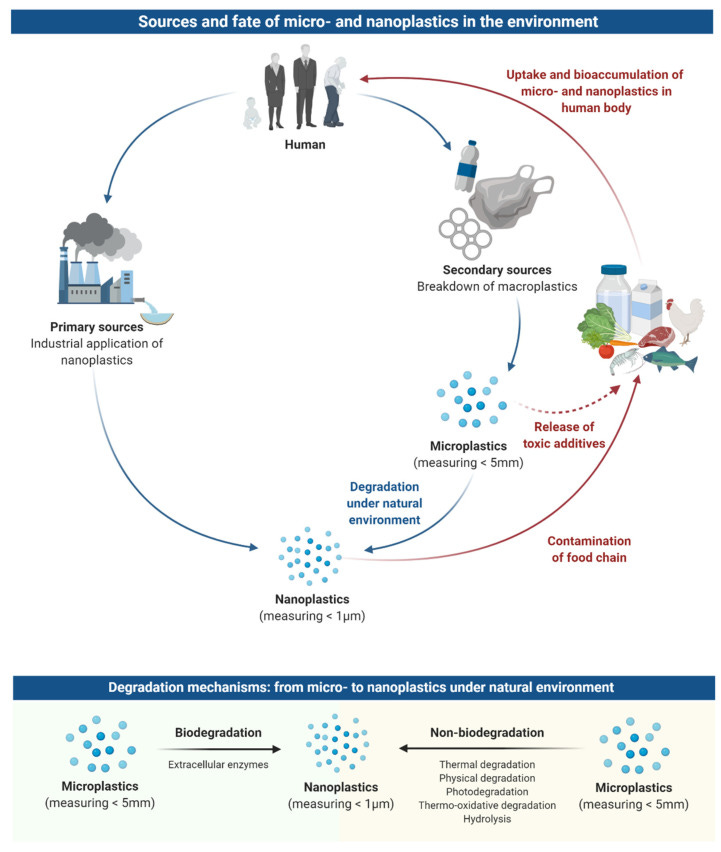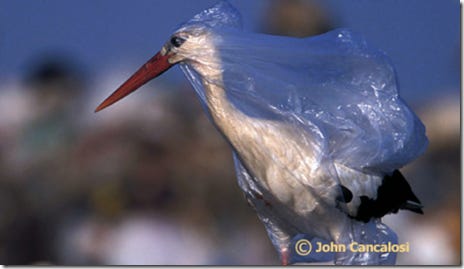Billions of people were putting masks on their faces and breathing in toxic nanoplastics, all because Dr. Fauci told them masks would save their lives when in fact, masks were killing them.
To read or listen to this entire essay, please go to: https://khmezek.substack.com/p/the-circle-of-death
To read and listen to all my essays, articles and interviews, please subscribe at: https://khmezek.substack.com/
First of all, here’s a story about a man and a jar.

80-year-old David Latimer planted a terrarium garden on Easter Sunday in 1960. He placed some compost and a quarter pint of water into a 10-gallon glass carboy and inserted a spiderwort sprout, which is not typically an indoor plant, using wires.
In 1972, he opened the plant terrarium again to add a bit of water. With that one exception, the garden has remained sealed – all it needs is plenty of sunlight!
The self-contained ecosystem has flourished for nearly 60 years.
For those who are wondering how this is even possible: the garden is a perfectly balanced and self-sufficient ecosystem. The bacterium in the compost eats the dead plants and breaks down the oxygen that is released by the plants, turning it into carbon dioxide, which is needed for photosynthesis.
The bottle is essentially a microcosm of earth.
Amazing🌿
This is natural life. Perfectly balanced and self-sustaining. Leave it alone and it will thrive. In fact, who knows how it might have improved over time, if humans had respected that natural order and nurtured it.
Instead, we got it into our heads that we could do better. We could deconstruct our world and reconstruct it in a “new and improved” way. With plastics, we found a way to create something that was fully synthetic. Meaning it was the first manmade product to contain no molecules found in nature.
In her book, Plastic: A Toxic Love Story, Susan Freinkel describes what humans do in our ever-bolder quest to prove that we know better than nature—all for the sake of convenience and instant gratification:
“We take natural substances created over millions of years, fashion them into products designed for a few minutes’ use, and then return them to the planet as litter that we’ve engineered to never go away.”
Instead of the Circle of Life that we all learned about in school (I wonder if they will eventually stop teaching this as dangerous disinformation):

we created the Circle of Death (which we are supposed to celebrate as the wonders of modern science):

Like so many inventions, plastic started with good intentions.
It was in 1869 that John Wesley Hyatt invented the first synthetic polymer, or plastic, as a substitute for the ivory used to manufacture billiard balls. After all, who wants to kill elephants for their ivory when you can make a synthetic product instead.
Science History tells us how truly revolutionary this discovery was:
For the first time human manufacturing was not constrained by the limits of nature. Nature only supplied so much wood, metal, stone, bone, tusk, and horn. But now humans could create new materials. This development helped not only people but also the environment. Advertisements praised celluloid as the savior of the elephant and the tortoise. Plastics could protect the natural world from the destructive forces of human need.
The creation of new materials also helped free people from the social and economic constraints imposed by the scarcity of natural resources. Inexpensive celluloid made material wealth more widespread and obtainable. And the plastics revolution was only getting started.
In 1907 Leo Baekeland invented Bakelite, the first fully synthetic plastic. Marketed as “the material of a thousand uses,” Bakelite could be shaped or molded into almost anything, providing endless possibilities.
Preserving natural resources became the excuse to produce plastics. And then, there was war. War has always been the impetuous for inventing new things. Synthetic silk was used for “parachutes, ropes, body armor, helmet liners, and more. Plexiglas provided an alternative to glass for aircraft windows. During World War II plastic production in the United States increased by 300%”.
Thanks to plastics, the future looked bright and rosy. It began to take the place of every kind of product previously made from natural materials, from steel in cars to paper and glass in packaging. Plastic was inexpensive, safe and sanitary. There was talk that it would move humanity into a utopian future where everyone would prosper because of it.
Dow Chemical Company was founded in 1897 by chemist Herbert H. Dow. It was and still is the largest plastic manufacturer.
Here’s an interesting historical note about Herbert Dow. Although Dow didn’t drink, he died of liver failure, most probably due to exposure to various drugs and chemicals from the laboratory and overseeing plant production. It was the habit of 19th century scientists to “taste the chemicals” as part of their evaluation process. Little did they know how toxic the chemicals were to their own bodies, or what havoc their inventions would wreak on the environment over time.
Here are just a few of the horrors that Dow Chemical unleashed on our world, often in partnership with the United States government which gave them contracts.
- Dow is the company responsible for mustard gas, a toxic blistering agent used in chemical warfare, during World War I.
- During the Vietnam War Dow produced napalm, an incendiary used indiscriminately against civilians and soldiers.
- Dow made Agent Orange, a defoliant containing the toxic substance dioxin. In 1984 Dow settled a class-action lawsuit out of court by agreeing to establish a $180 million fund for the use of veterans and the families of veterans exposed to Agent Orange. In 2005 Vietnamese victims of Agent Orange filed suit against Dow Chemical and the Monsanto Company, however, the lawsuit was dismissed.
- Silicone breast implants manufactured by Dow were responsible for a variety of autoimmune disorders due to leakage. Dow Corning postponed conducting safety studies for more than ten years. In order to avoid lawsuits, it declared bankruptcy.
- Dow Chemical manufactured and sold a bug killer linked to children’s brain damage. The pesticide contained Chlorpyrifos as its main ingredient for use on 80+ crops like walnuts, soybeans, almonds, oranges. It was first discovered in 1965 and wasn’t banned for household use until 2001.
- In 2001 Dow bought Union Carbide. It’s branch in Bhopal, India, emitted a highly poisonous gas, methyl isocyanate. According to Corp-Research, the poison killed 8,000+ people, with thousands of others suffering terminal illnesses and personal injury, while children were born with genetic damage.
There are many more examples I could cite but that is enough of that. Here’s a few concerning facts about plastic production and waste:

ExxonMobil is the greatest single-use plastic waste polluter in the world, contributing 5.9m tons to the global waste mountain. Dow, which is based in the US, comes in second with 5.5m tons of plastic waste, while China’s oil and gas enterprise, Sinopec, created 5.3m tons. Plastic production is funded by leading banks, chief among which are Barclays, HSBC, Bank of America, Citigroup and JPMorgan Chase.
We can’t stop hearing about our carbon footprint related to products like cars and heating apparatuses, yet very little about single use plastics which are made almost exclusively from fossil fuels—and only 10%-15% of single-use plastic is recycled globally each year. Maybe it’s because plastics are just too convenient and profitable.
A few years ago, as I was driving out of the Sahara Desert on my way to catch the night bus over the Atlas Mountains to Fes. The sun was low in the sky and in the distance, I saw what looked like strangely beautiful and multi-colored land formations rising up against the dunes. As we got closer, I realized what I was seeing was millions of plastic bottles, pushed up against the dunes by the wind. As far as the eye could see, they marred the landscape. I had never seen anything like it, and I hope I never do again. But it has probably only gotten worse since then.
The impact plastic has on the environment is frightening. But it is nothing compared to what it is doing to our bodies and our minds. Microplastics are bad, but nanoplastics are worse. Microplastics contain particles with less than 5-millimeter particle size whereas nanoplastics contain particles with less than 100 nanometer particle size. It is nanoplastics that are accumulating in our blood, organs and brains.
Of special concern, should be the effect it is having on pregnant women and children. Yet there are currently no data regarding the presence of nanoplastics in food, for example, even though we cover most of our food with plastic. According to ResearchGate, there is no legislation for microplastics and nanoplastics as contaminants in food, nor are there methods available for identification and quantification of microplastics. This seems incredible to me.
Here are some of the ways nanoplastics are entering our bodies.
An average person ingests 5 grams of plastic per week, or the equivalent of one credit card. Most of that comes from water, and I’m not just talking about water bottled in plastic.
- Plastic is found in every kind of water (groundwater, surface water, tap water and bottled water) all over the world.
- An average person potentially consumes as much as 1769 particles of plastic every week just from water.
- 94.4% of tap water samples in the United States contained plastic. The only country with a higher percentage is Lebanon. But the US had the highest number of fibers per 500 ml at 4.8.
Maternal exposure to nanoplastic induces transgenerational toxicity in marine life. There is good reason to be concerned about the same thing occurring in humans.
80 Percent of Retail Receipts Contain Toxic Substances, according to a 2022 study, a 13 percent decrease from the center’s findings in 2017.
The study went on to explain that “nearly all receipts are made from thermal paper, which is coated with layers of chemicals that allow an image to form when a special print head applies heat.” The researchers used a rapid screening technique to identify developer chemicals, such as BPS, BPA, and non-bisphenol alternatives present on the receipts.
We could say, okay, yes, this is all true, but we’ve gotten so used to the convenience of plastic, it will take some time to figure out how to replace it with something else. And besides, even if we did on an individual basis stop using plastic bottles and containers in our homes, plastics are still in our clothes, our furniture and just about everything else we use. It’s impossible to escape it.
That’s true. So why then did our fearless scientific leaders, like Dr. Fauci, who surely knew the toxicity of plastics, insist that we wear plastic on our faces during Covid. To “protect” us from an illness that wasn’t dangerous for most of us anyway. How in any sane world could this be justified?
Before Covid-19, there was one way that humans were not absorbing dangerous nanoplastics and that was from inhalation. That all changed with mask mandates.
Naturally, the manufacture of masks became a booming business. China was the world’s leading mask manufacturer before the pandemic and solidified this position amid the Covid-19 outbreak, making 85 per cent of all masks. In the first five months of 2020, over 70,000 new companies registered to make or sell face masks in China. All unregulated and often made in the most unsanitary conditions.
To read or listen to this entire essay, please go to: https://khmezek.substack.com/p/the-circle-of-death
To read and listen to all my essays, articles and interviews, please subscribe to: https://khmezek.substack.com/
Dear Karen
Hello from the UK. That is a seriously good article on plastics. I have yet to do anything much myself, but yours is very comprehensive so thank you very much. I have read you on substack and I started a page myself in April this year.
https://baldmichael.substack.com/
I don’t know if it is your cup of tea as it were but I did do this on Fauci. I am not PC.
https://alphaandomegacloud.wordpress.com/2023/02/02/anthony-fauci-director-of-the-national-institute-of-allergy-and-infectious-diseases-niaid-and-the-chief-medical-advisor-to-the-president/
or this which is shorter and on WordPress but also on substack
https://baldmichael.substack.com/p/gain-of-function-and-anthony-fauci
Kind regards and thank you for all you do getting the truth out there.
LikeLiked by 1 person